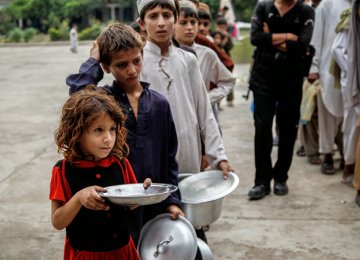Enough food to feed two billion people is wasted every year, leading UN agencies to create a new interactive platform to try to reduce the losses, which could easily feed the world’s 800 million who go hungry.
An estimated 1.3 billion tons of food, or roughly 30 percent of global production, is lost or wasted annually, according to the UN Food and Agricultural Organization (FAO), Aljazeera reported.
Most of the developing world’s spoilage happens during storage or transport, as infrastructure for refrigeration and preservation is often inadequate.
The FAO’s released a video of their Food Wastage Footprint project, explaining that in addition to the retail cost of food lost, another $700 billion is thrown out in natural resources, including $172 billion in wasted water, $42 billion in cleared forest and $429 billion in related greenhouse gas costs.
Wasted food results in $150 billion in human health costs related to the use of pesticides. Additionally, $280 billion in loss of livelihoods (as natural resources become more scarce) is tossed out the window when food is thrown away.
“We need to close the gap between people being aware of this problem and what they do when they are standing in the grocery store or in the kitchen,” said Dana Gunders, a scientist with the Natural Resources Defense Council, a US environmental advocacy group.
More than 40 percent of root crops, fruits and vegetables, 20 percent of oil seeds, and 35 percent of fish never reach the mouths of hungry people, the FAO reported.
In developed countries, food waste usually occurs in homes or restaurants, when consumers discard products they believe have gone rotten, or in grocery stores if products don’t look picture perfect due to slight blemishes.





